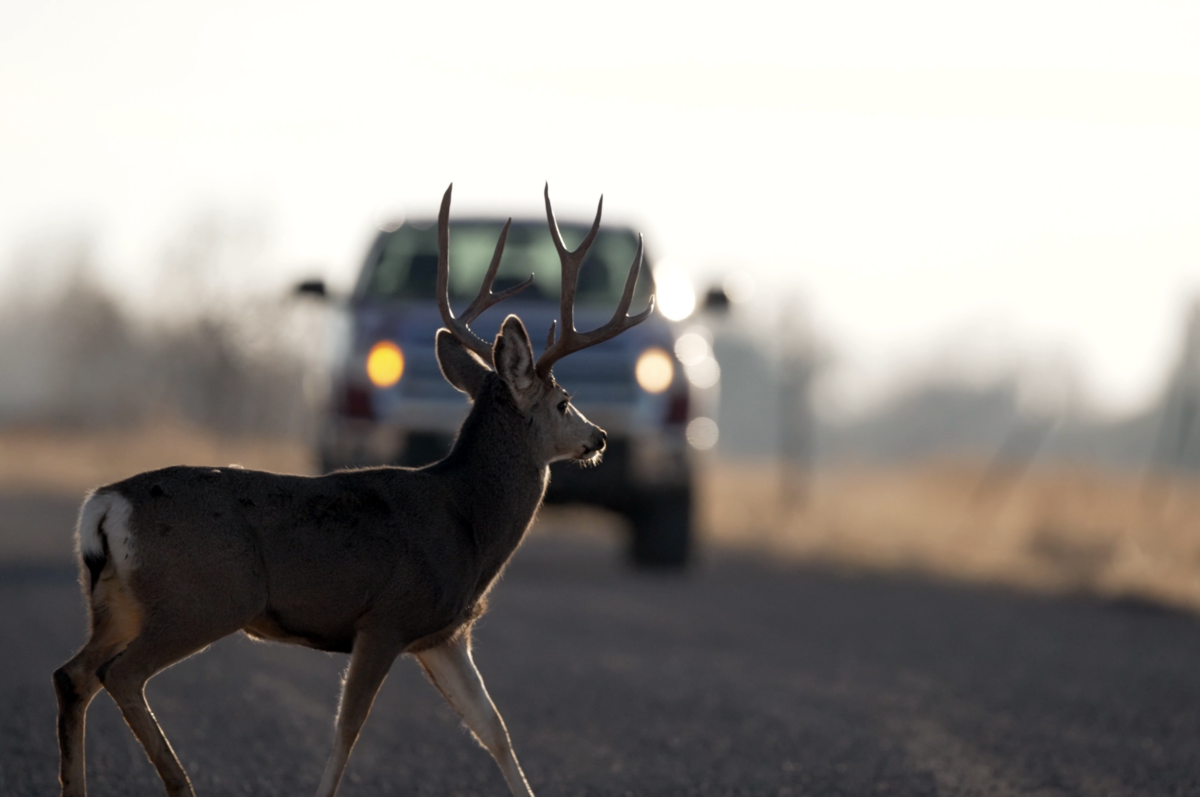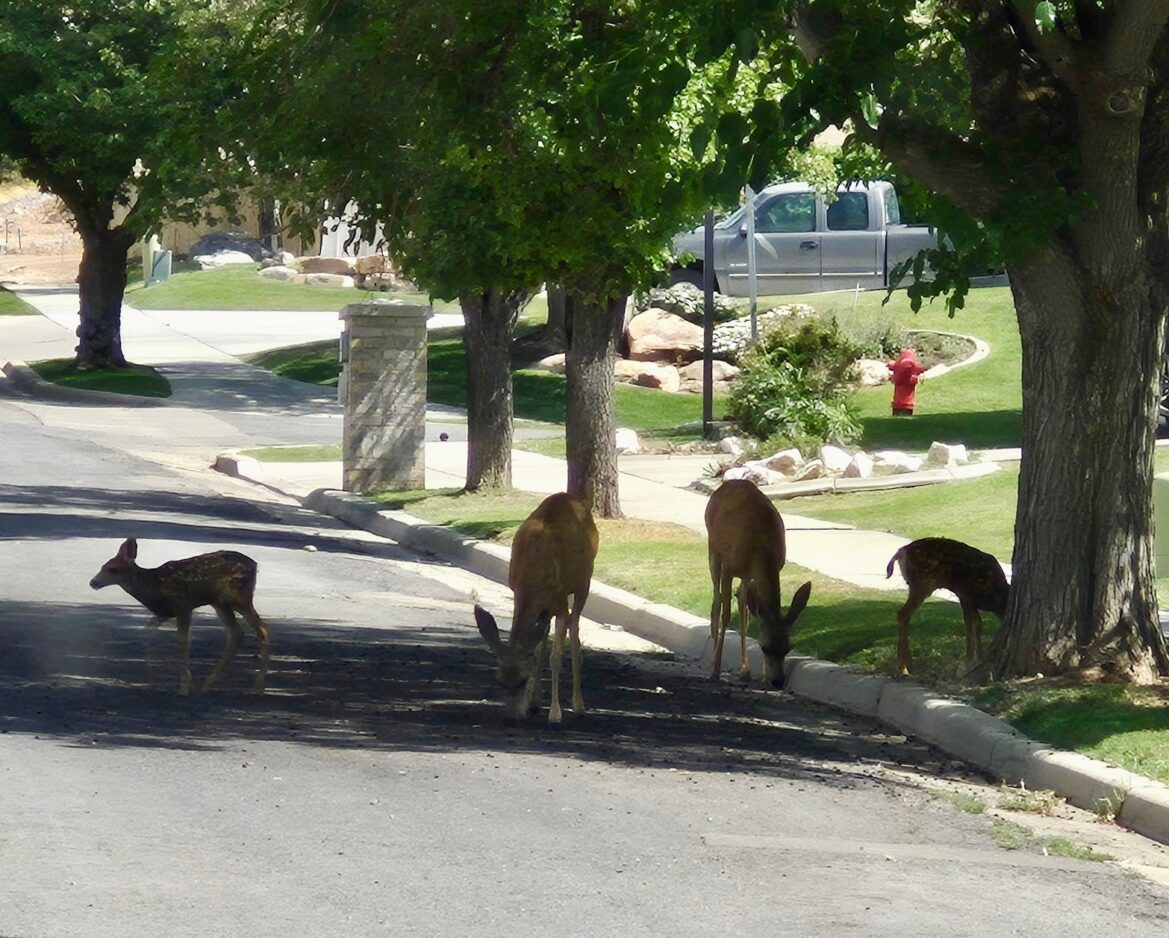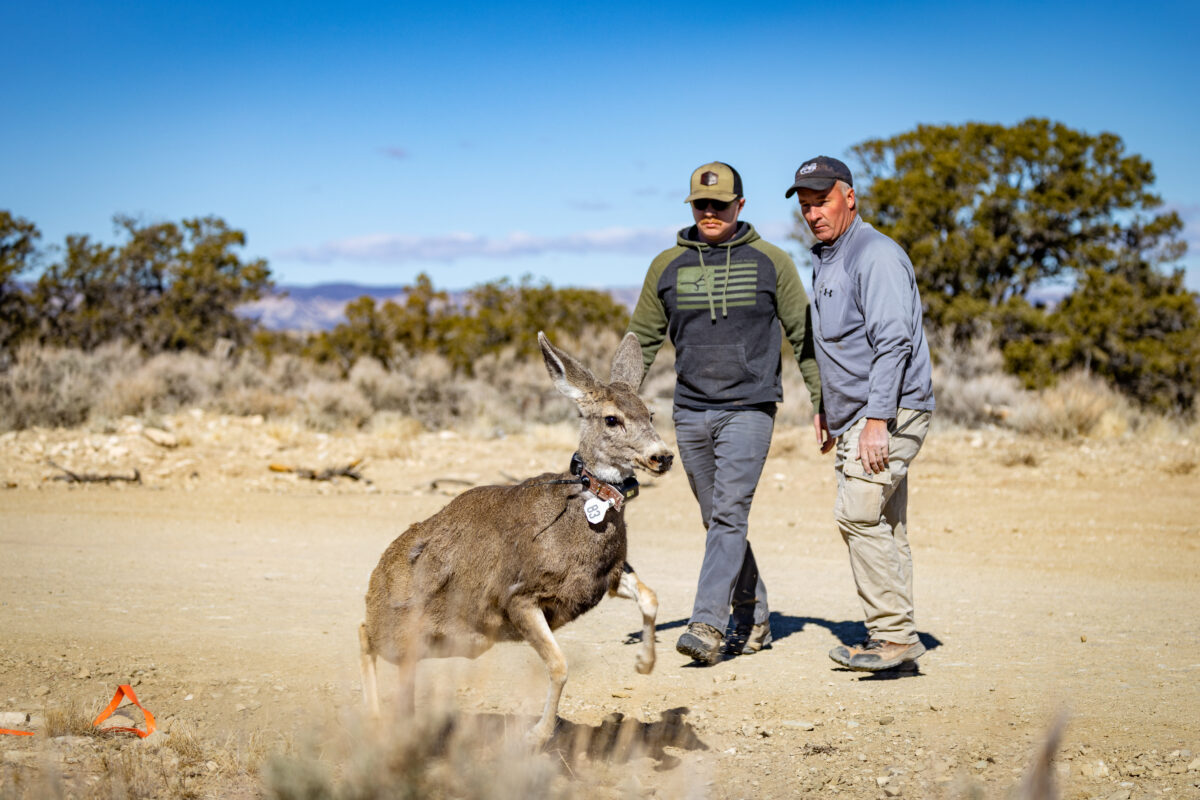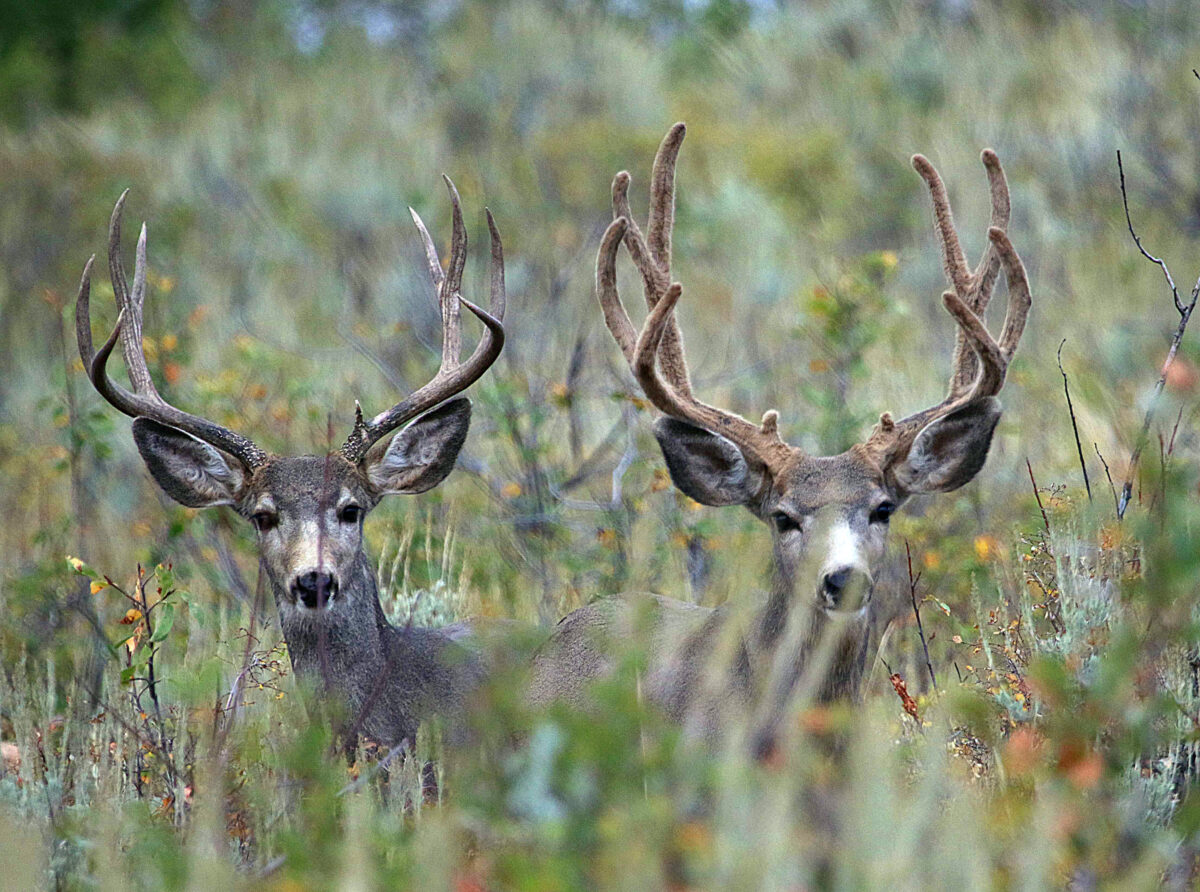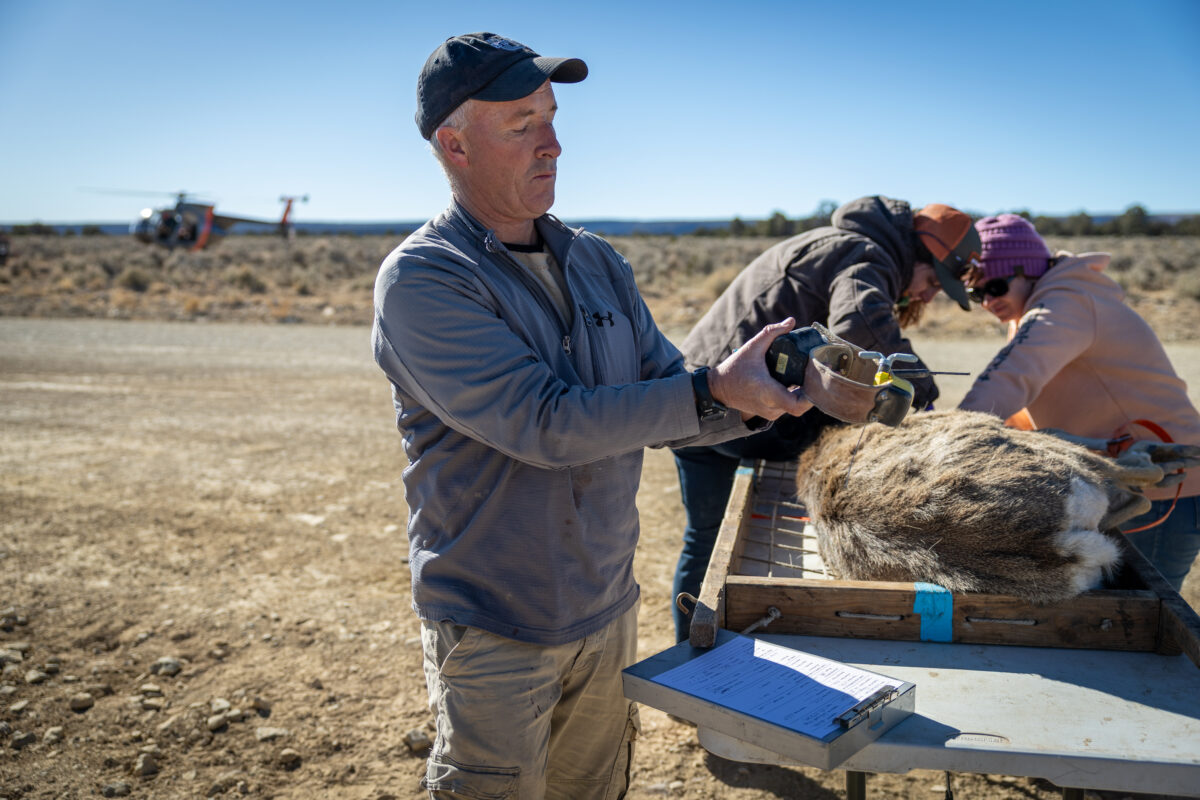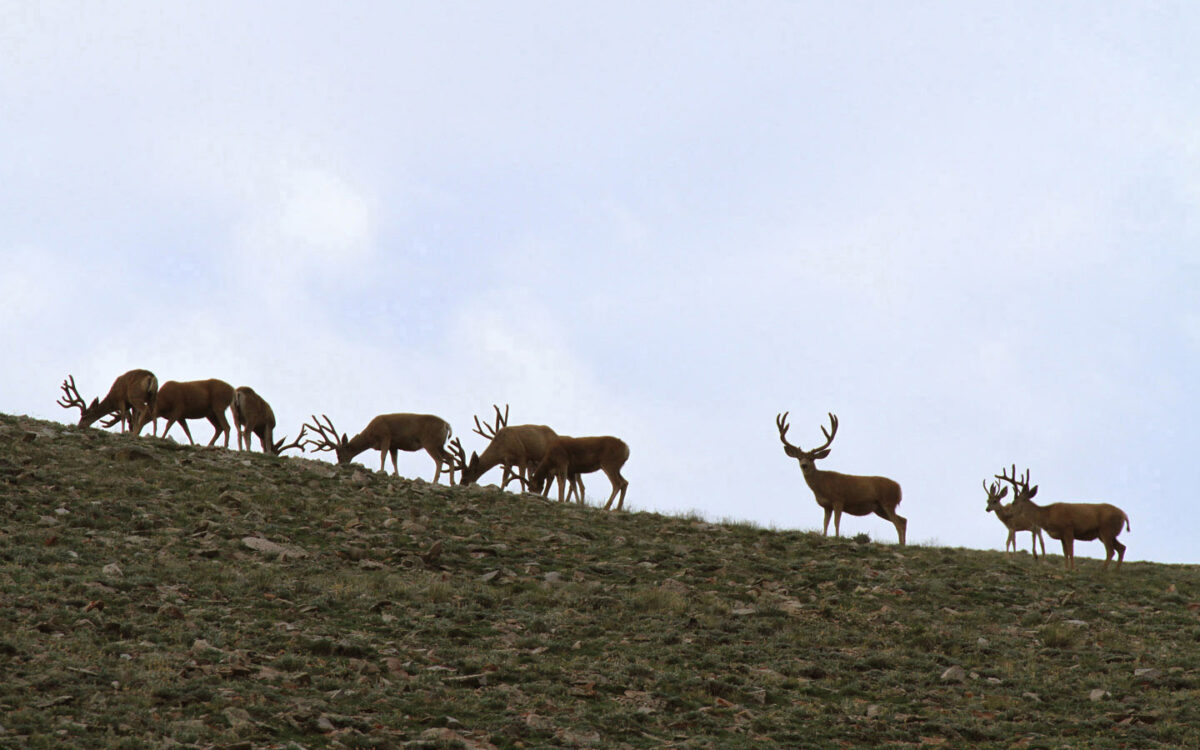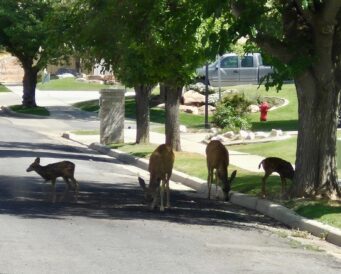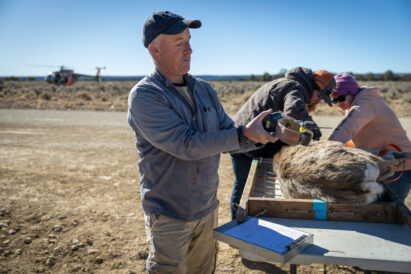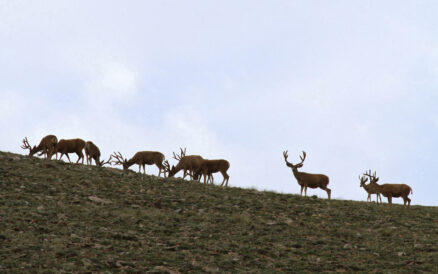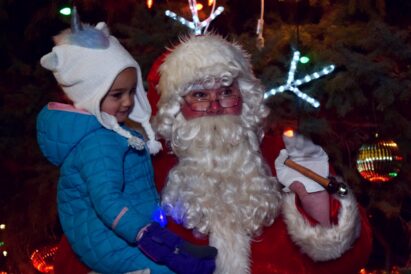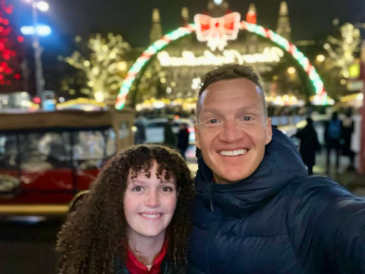Oh, deer: Busy time for our wildlife neighbors brings dangers for humans and mule deer
- A buck deer stands in the road as a truck heads toward in on Oak City in November of 2022.
- Mule deer walk through a neighborhood in Tooele in July of 2025.
- Mule deer are tranquilized and evaluated during a deer capture event in Range Creek on Feb. 26, 2025.
- Mule deer stand on a hillside in an undated photo.
- Mule deer stand on a hillside in an undated photo.
- Mule deer are tranquilized and evaluated during a deer capture event in Range Creek on Feb. 26, 2025.
- Mule deer stand on a hillside in an undated photo.
People from other parts of the country often get pretty excited about seeing deer in the wild.
Along the Wasatch Front — particularly near the foothills — having deer around is just part of daily life.
And that’s not always a good thing.
It’s one thing to see Utah’s mule deer in picturesque natural settings — and quite another to have one jump onto the road in front of your car or eat up the flowers and bushes in your yard.
The month of November is a particularly busy time for the four-legged neighbors and that can increase potential issues.
Makeda Hanson, wildlife migration initiative coordinator for the Utah Division of Wildlife Resources, described in a phone interview earlier this week why deer are particularly active right now.
“We are right in the middle of migratory deer season, and so we often see mule deer in the state migrating from higher elevations to lower elevations in search of food and resources for the winter months,” Hanson said. “We often see them more on urban interchanges and around major roads, so we see an uptick wildlife vehicle collisions this time of year.
“Also, it’s mating season, so the bucks are often kind of distracted looking for does to breed. They often aren’t maybe as aware of their surroundings and might be making poor decisions in being encountered on roadways. So we see a lot of movement right now.”
She explained that deer in Utah can travel up to 70 miles as part of their migratory patterns, and even in areas along the Wasatch Front that distance can be 30 miles.
Mule deer herds in the state are relatively healthy, according to Hanson, although the numbers aren’t quite as high as they would like them to be.
“We don’t have any concerns in terms of a major decline of deer or anything like that,” she said. “But when it comes to more of the social part of deer management and how we hunt deer in the state of Utah, which people tend to care about a lot, we are slightly under our population objectives in the state. We don’t have as many deer as we’re hoping to have, so we are trying to grow the deer herds.”
She said a variety of factors come into play when they evaluate increasing the amount of deer.
“The growth of those populations depends a lot on weather and vegetation growth in that season and previous winters, and levels of drought in the state,” Hanson said. “We do have different things that impact herd health in a few areas across the state. We do have things like chronic wasting disease that can cause concern for certain populations, and we are trying to track that in the state. We have a veterinarian who works really closely with that we be really cautious of how deer carcasses are moved or disposed of, so we don’t have the spread of disease.”
Some view hunting as beneficial to herd health, while others feel like it does significant damage. Hanson said in terms of herd health hunting doesn’t have a big impact.
“We can see single digits of bucks in previous research that they have enough biological capacity to breed the does present on the landscape,” Hanson said. “In terms of herd health, hunting males in the population really doesn’t impact that much.”
She added that the funding that comes from hunting licenses and other aspects of the recreational activity aids her department in helping manage deer populations.
“It’s kind of like a secondary type of thing where buck hunting doesn’t necessarily influence population, but the money generated from that is really, really important to helping ensure that we maintain quality habitat and access and connectivity for wildlife,” Hanson said.
Hunters may be looking for deer, but drivers and homeowners would often prefer to not have encounters with that type of local wildlife.
Like it or not, though, it’s just part of living in Utah so Hanson has a few tips to lower the risks.
“Definitely keep your eyes open when you’re driving on the roads,” she said. “Now that we’ve come into daylight savings time, it’s often darker earlier as people are commuting. It’s really important to just be vigilant when you’re driving, especially in those areas.
“You can often just look for for the eye shine. Deer and elk and other wildlife, their their eyes will reflect the light off the vehicle. Oftentimes if you see one deer, you’ll see others. So even if you see one cross, just anticipate that there may be another deer crossing the road as well. They can often be seen just even feeding along the roadways, so it is really good to pay a lot of attention on the roadways.”
Caution can only do so much and so collisions will happen. Hanson said the Division of Wildlife Resources wants to track them so they can see patterns and increase preventative measures.
“If you do happen to hit a deer on the road, we have an application called the Wildlife Vehicle Collision Reporter app,” she said. “That really helps us determine where those problem areas are across the state so we can try and mitigate those, and work with our Department of Transportation to try and solve problems where we see really big issues with wildlife.”
As for having deer in yards, she said that is to be expected in local areas.
“We don’t necessarily need reports of animals in neighborhoods, unless they are acting aggressively,” Hanson said. “I mentioned earlier that we’re kind of in the middle of the rut when buck deer are searching for females, and sometimes they can be a little bit aggressive, just as they’re trying to defend the females from other bucks. If you’re having issues with deer in your neighborhood that are acting aggressively, or if they’re damaging your landscape, there are a few preventative measures that you can take.”
She said the biggest caution she can give, though, is to not feel like you need to help out deer.
“We don’t want to have people feeding wildlife during winter months,” Hanson said. “I mentioned other issues with chronic wasting disease earlier and then there is also increasing potential for public safety concerns if you’re feeding wildlife. We encourage people not to feed wildlife that are in their in their yards.”
There are other ways to get close to deer, including volunteering to help Hanson’s department with some of their efforts.
“There are a lot of different things that you can do to help,” she said. “We are entering capture season, so we’re going to be collaring several hundred deer throughout the state. That’s an opportunity where you can probably reach out to your local office and talk to one of the biologists, if you have an interest in participating in a capture event.
“That’s where we typically collar the animals and check their body condition, how fat they are, things like that, which is really the only way for the public to get a hands-on opportunity.”
For more information on opportunities to volunteer as part of capture events, call the local Division of Wildlife Resources office. There is one in Ogden (801-476-2740) and one in Springville (801-491-5678).
Other information and details can be found on the division’s website at wildlife.utah.gov.

